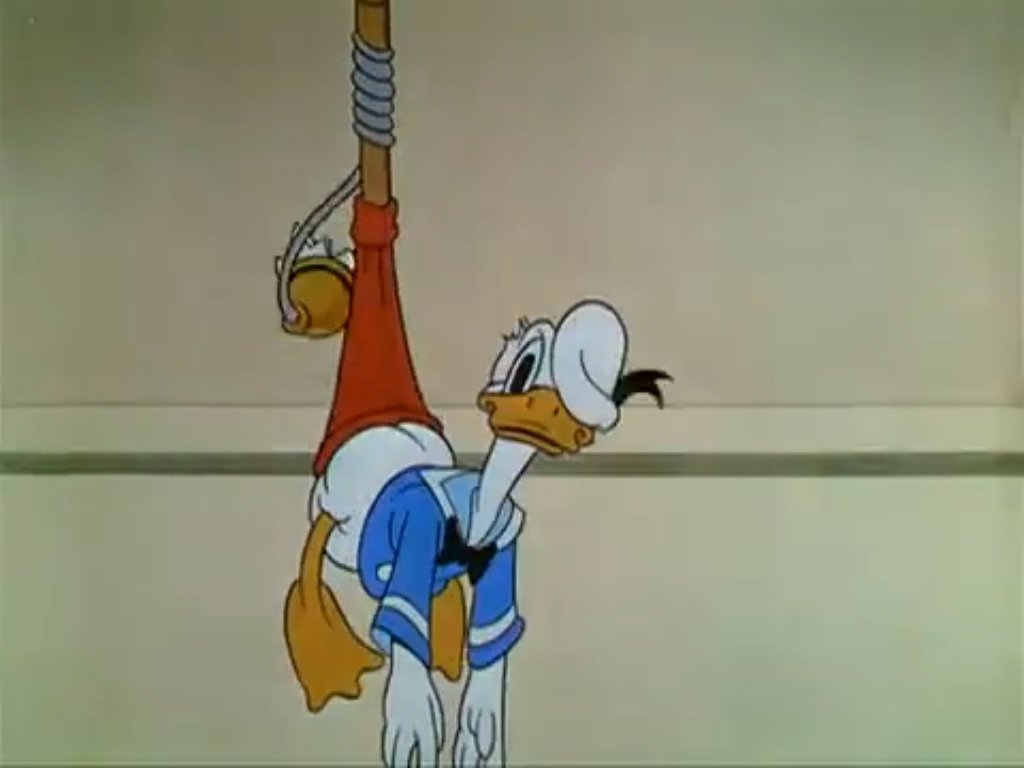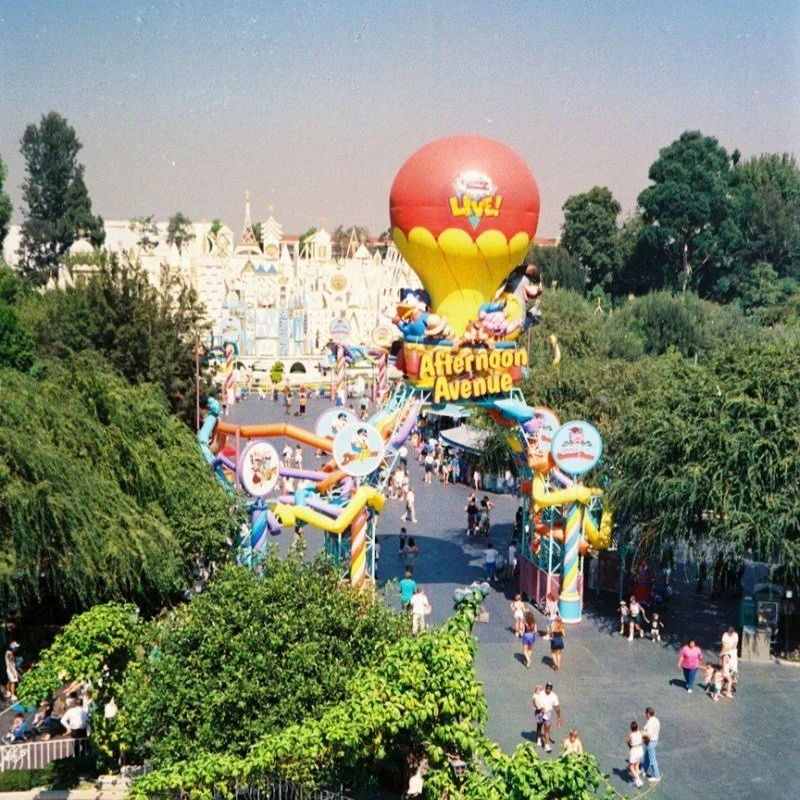The Evolution of Donald Duck and Daisy Duck
Last Valentine’s Day, I wrote about the real life romance between Wayne Allwine and Russi Taylor, the voice actors behind Mickey Mouse and Minnie Mouse. This year, I thought I would shift the focus over to our other favourite Disney pair, Donald Duck and Daisy Duck.
Donald Duck’s First Appearance
During Disney’s time of experimenting with new animation styles and introducing new characters into their stories, they realized how well the animal characters did, like the two main mice. The Silly Symphony film series explored these different types of animal characters, like squirrels in Autumn (1930), fish in Frolicking Fish (1930), and owls in Night (1930). The Silly Symphonies continued to evolve, adding color in 1932, and introducing characters we still know today like the Three Little Pigs. Walt’s next idea was to add a duck to the gang, and this idea sprouted from hearing the voice of radio performer Clarence Nash.
Clarence had been working on a radio show called The Merrymakers, where he specialized in animal impressions. He mostly did birds, but he did have a performance of “Mary Had a Little Lamb” with his duck voice. One day, while he was travelling via milk wagon, he stopped by the Walt Disney Studios and was asked to audition. Between the distinctive voice heard on the radio and his stellar impressions, Walt and his team knew they had found their duck. Before becoming Donald, Nash provided bird sound effects for the January 1932 short film The Bird Store. He continued to add background sounds to the Silly Symphony cartoons until he was finally officially introduced as Donald Duck in the 1934. Donald’s first short was called The Wise Little Hen, where he is seen as a more realistic duck, with a longer bill and neck. Disney animator Fred Spencer was responsible for the conception of the duck, and was the expert on him in the character’s early years. Donald appeared in 10 more shorts from 1934 to 1936 before his appearance changed to the anthropomorphic duck in the short Moving Day.
Donald Duck in The Wise Little Hen. Image from: https://www.fanpop.com/clubs/donald-duck/images/9561868/title/donald-duck-wise-little-hen-screencap
Daisy Duck’s First Appearance
After almost a decade of Donald and his successes in 20 other Disney cartoons, it was time to bring in a mate for him. Donald’s nephews, Huey, Dewey, and Louie, were introduced in the appropriately-titled Donald’s Nephews short in 1938. With his family growing, Daisy finally made her official debut in Mr. Duck Steps Out (1940). Originally, Clarence Nash took on the role of Daisy as well, much like how Mickey and Minnie shared Walt as their original voice actor. The cartoon was directed by Jack King and written by Carl Barks, whom created the famous Donald Duck comics in the 1930s through to the 1960s.
Daisy was the last of the “sensational six” to be introduced, and became a staple character in 1941’s Nifty Nineties, which was a Mickey Mouse cartoon. Daisy appeared in 10 more Donald Duck cartoons through the 1940s, where she starred as a lead character in a handful.
Daisy Duck in Mr. Duck Steps Out. Image from: https://www.imdb.com/title/tt0032814/
The Significance of Don Donald (1937)
Though Daisy made her first appearance in 1940, the earliest version of a love interest for Donald was “Donna Duck” in the 1937 short Don Donald. It’s been implied by Disney over the years within their comics and continued Donald Duck cartoons that Donna and Daisy are the same character. This was the only time Daisy was shown as Donna in film history, with the exception of a comic strip series titled Donald and Donna.
Don Donald was also a Mickey Mouse cartoon that did not feature Mickey at all, but had Donald and Donna as the main focus. This was so that the studio could test the waters and see what the audience reaction would be to slowly phasing out Mickey and bringing Donald to the spotlight.
Donald and Donna in Don Donald. Image from: https://mubi.com/films/don-donald
The Evolution of Donald and Daisy Duck
Donald’s Appearance
From the very beginning in 1934, Donald Duck always dawned the sailor costume. According to Cartoon Research, there was a very early outline for Donald titled The Surprise Party, where various character performed different talents for Mickey for his birthday. This was meant to be Donald’s first appearance, which the author hypothesized is where the sailor uniform may have originated (to go along with the birthday party theme). Though his sailor costume was present from the start, it did have a slightly different look to it, including a black bow and a white hat with blue trim. He appeared as the more “realistic” duck form for a few more cartoons in the early 1930s, including in Orphan’s Benefit and The Band Concert.
As mentioned above, once Donald got to the Moving Day era, this is when his physical attributes transformed more closely to the duck that we have all etched into our brains. His eyes got bigger, allowing for more expressions and emotions, his bill was shortened, and his lower body became less round. Fred Moore is credited as being the turning point animator who redesigned Mickey, Minnie, Donald, and Daisy to become the characters we know and love today.
Donald Duck in Moving Day. Image from: https://www.imdb.com/title/tt0027994/
Donald’s appearance became more fine tuned as years went on, and the studio started to feature him by as the lead character in Mickey Mouse cartoons, until he finally got his own cartoon series. Along with more Donald cartoons, he also became the face of wartime propaganda that was put out by Disney in the early 1940s. Most notably, the film Der Fuehrer’s Face starring our duck won the Academy Award for Best Short Film in 1942. He continued to grow and surpass Mickey’s filmography, starring in more than 8 films a year and eventually putting Mickey into retirement for a short time. Donald’s classic cartoons officially ended a few years after Mickey’s in the 1960s. Eventually, the duck family grew even more, and the popular series DuckTales launched in 1987.
Donald’s Voice Actor
Donald was voiced by the founder of his character Clarence Nash for over 50 years, staying true to the original intent of the character. Clarence also voiced Donald outside of the cartoons, for commercials, promos, and other materials. His very last film performance was Donald was in 1983’s Mickey’s Christmas Carol. The duck torch was then passed on to Tony Anselmo for majority of the late 20th century. Now, voice actor Daniel Ross and Tony Anselmo have shared the role as the grouchy ol’ duck.
Clarence Nash and Donald Duck. Image by: https://lib.utsa.edu/lapuerta/celebrities/l-3479-a/
Daisy’s Appearance
Daisy’s first appearance as Donna Duck does not differ as drastically as Donald’s early transformation, as she was introduced after the major changes Donald went through. Her high heels, bangles, and purple eyelids all were present from the very beginning. In Mr. Duck Steps Out, Daisy wears a blue top, pink bow, and white heels. Her physical appearance wouldn’t change much over the decades outside of her signature outfit colours changing. Daisy went through a yellow and green phase for several shorts in the late 1940s.
In the 1954 short Donald’s Diary, Daisy is seen with a whole different colour scheme, including the colour of her feathers. She is seen with a dark pink bill and legs, light pink feathers, and a blue and yellow dress. Her outfit in this film was meant to reflect the era, so the change didn’t last outside of it.
Daisy Duck and Donald Duck in Donald’s Diary. Image by: https://mubi.com/films/donalds-diary
Daisy’s Voice Actress
Esteemed actresses such as Gloria Blondell, Vivi Janiss, Kath Soucie, Diane Michelle, and others are credited for taking over the voice of Daisy through the 1940s to the 1980s. For many of Daisy’s earliest shorts, she had more of a duck-like voice much like Donald, but eventually it evolved into a ladylike voice, just slightly less high pitched than Minnie’s. The current voice actress of Daisy is Tress MacNeille.
Donald’s Double Trouble. Image by: https://www.imdb.com/title/tt0038486/
Though our likable duck couple have been together for over 80 years now, their appearances and personalities have grown together. Donald’s undying love for Daisy and Daisy’s flirtatiousness has held up, and are a much needed contrasting storyline to Mickey and Minnie’s. The ducks don’t plan on going anywhere, and still get attention today as one of Disney’s greatest creations.
Mr. Duck Steps Out. Image by: https://www.imdb.com/title/tt0032814/
Donald and Daisy Duck. Image by: https://ducktalks.com/2020/04/20/its-official-daisy-duck-is-in-louies-eleven/
Reference list:
https://www.waltdisney.org/blog/evolution-duck
https://cartoonresearch.com/index.php/origins-of-the-duck/
https://d23.com/walt-disney-legend/clarence-nash/
https://www.imdb.com/list/ls059249081/
https://www.disneydining.com/fun-facts-about-disney-daisy-duck/
https://disney.fandom.com/wiki/Daisy_Duck/Filmography
https://www.youtube.com/watch?v=Z_gtYcYU5oc
https://www.youtube.com/watch?v=1ZOD5ILDwO8&t=284s













